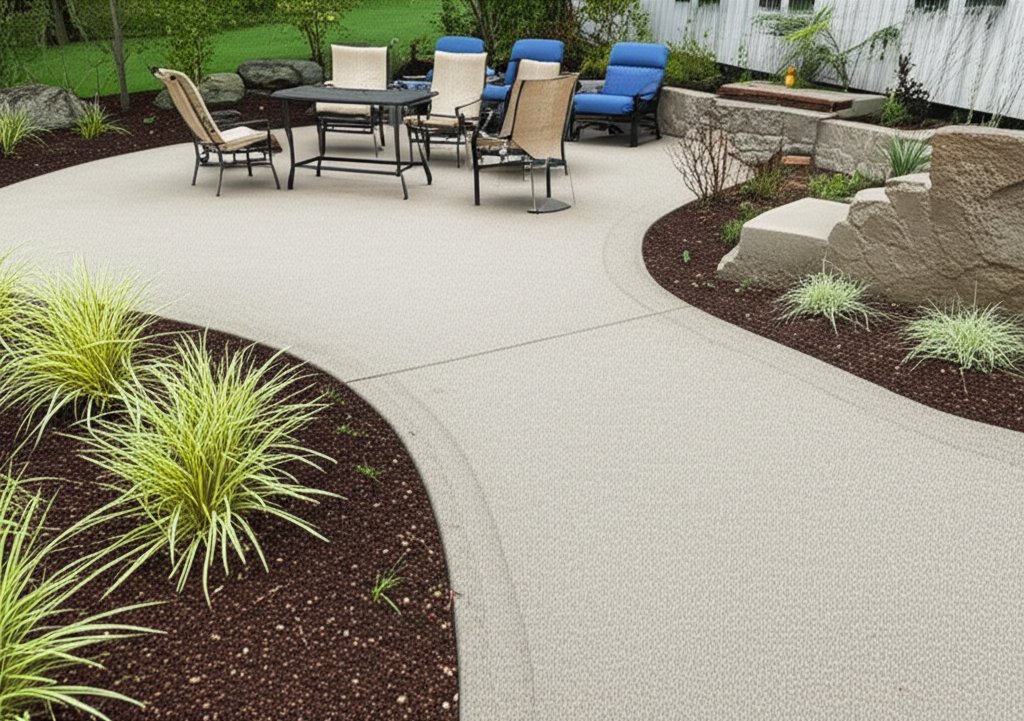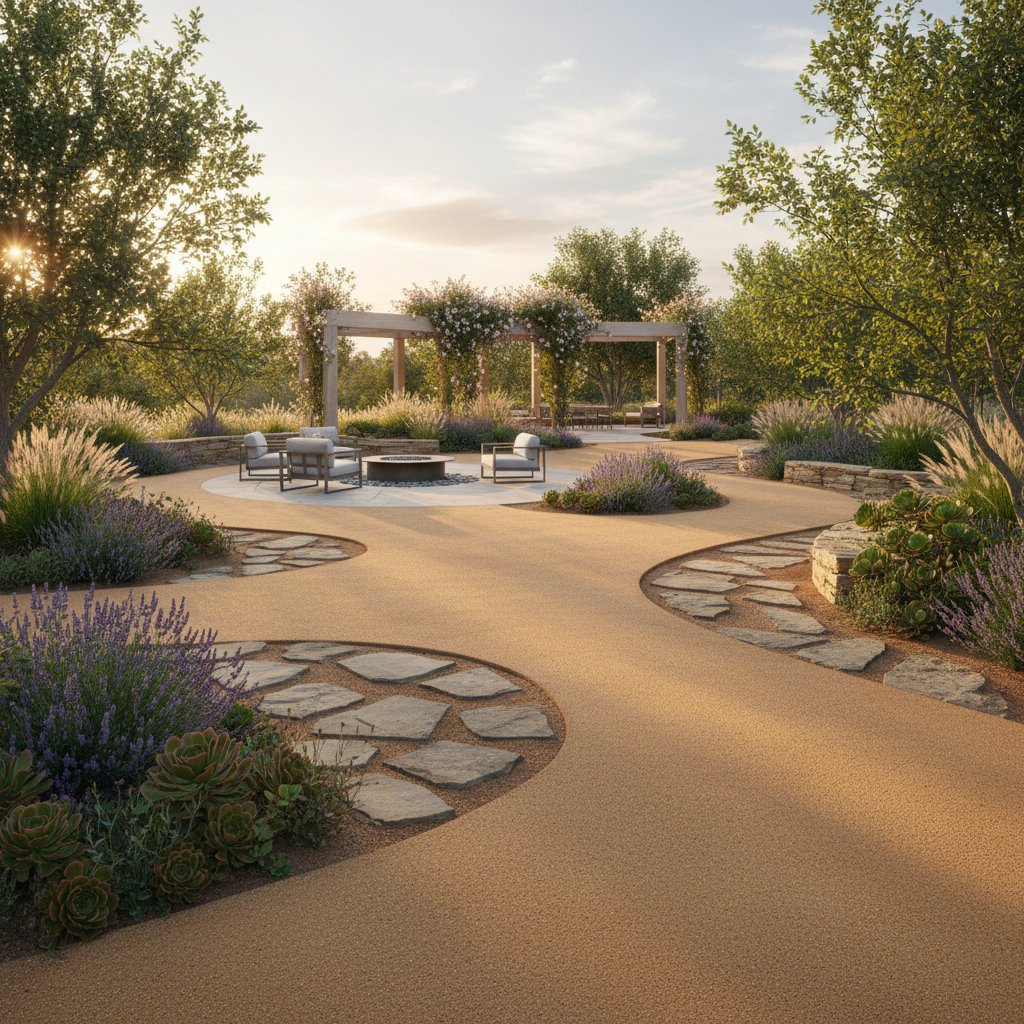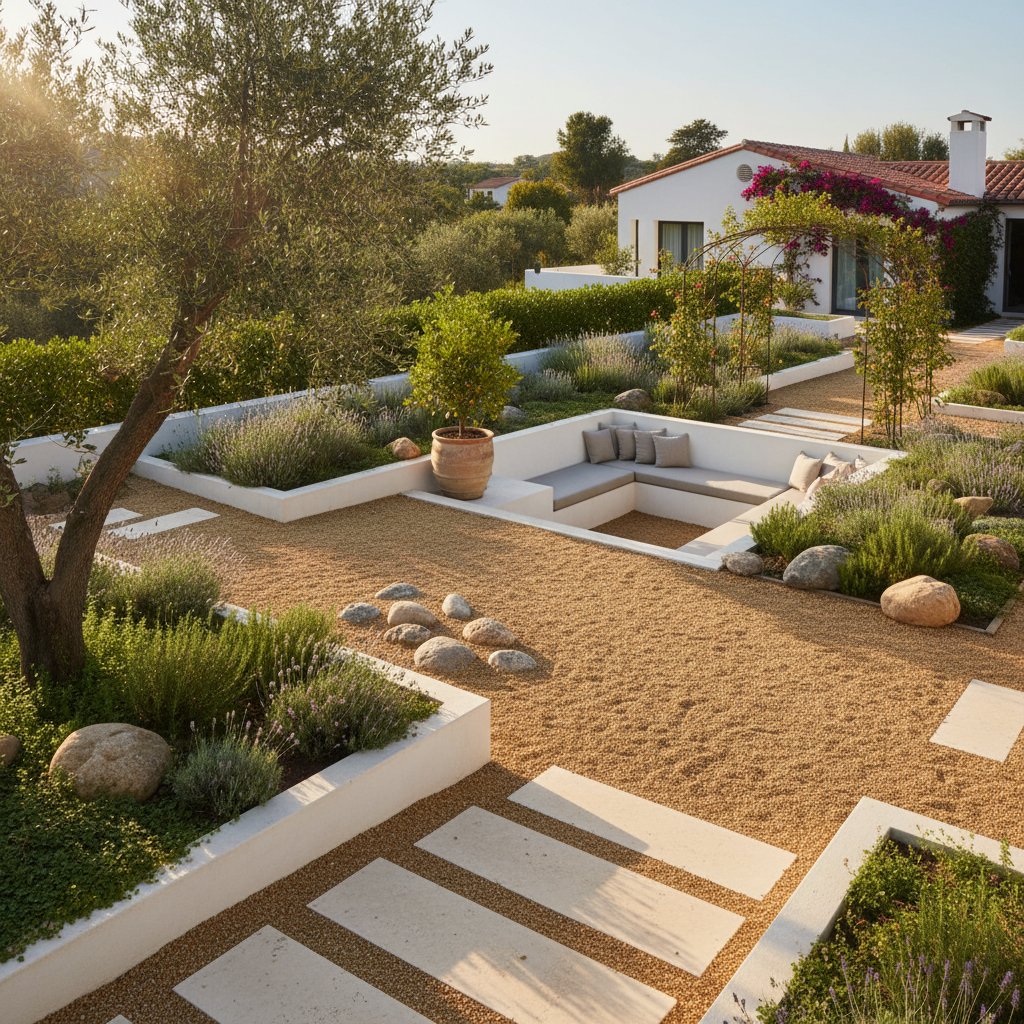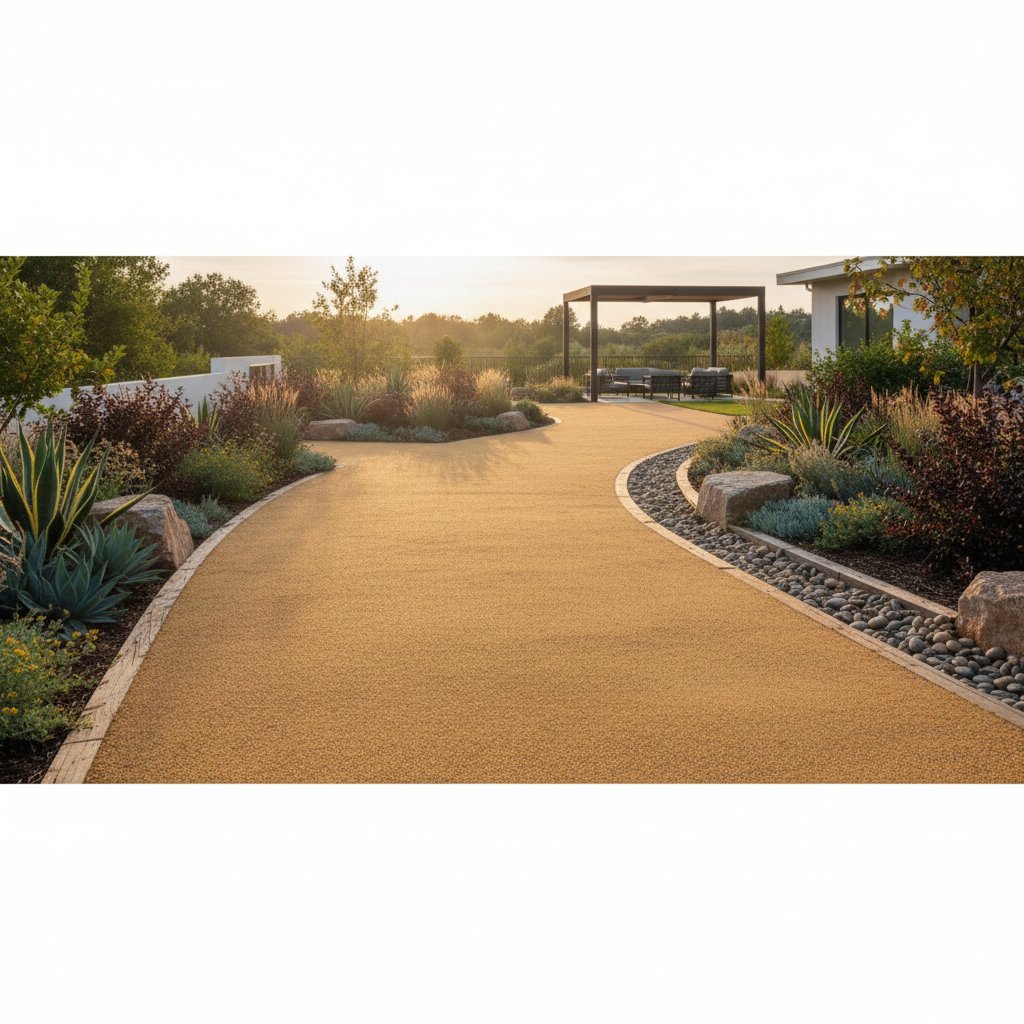Decomposed Granite: 2025's Smart Budget Hardscape
Homeowners seeking to revitalize their yards affordably often turn to decomposed granite. This material delivers a natural, polished finish for pathways, patios, and garden zones without the expense of traditional options. Known simply as DG, decomposed granite combines the rustic allure of gravel with superior compaction and a refined texture, adapting seamlessly to contemporary or traditional landscape designs.
What Decomposed Granite Is
Decomposed granite arises from the natural erosion of solid granite rock into finer particles over geological time. The outcome resembles a blend of small gravel and stone dust, creating a versatile landscaping medium. Colors vary by origin, though common shades include warm tans, rich browns, and subtle golds that complement diverse outdoor palettes.
Landscapers recognize three primary types of decomposed granite for hardscape applications:
- Loose DG: This form retains a highly natural appearance and excels in drainage. It suits informal settings but may require occasional redistribution to prevent shifting.
- Stabilized DG: A binding agent integrates into the mix, promoting a stable surface ideal for patios and walkways enduring regular foot traffic.
- Resin-coated DG: This variant achieves maximum durability through a protective resin layer, forming a near-solid surface resistant to heavy wear and erosion.
Why Homeowners Choose DG
Decomposed granite balances aesthetic appeal, economic efficiency, and functional performance. It imparts a professional finish to outdoor areas at a fraction of the price of pavers or concrete slabs. The following benefits highlight its popularity among budget-conscious designers:
- Cost-effectiveness: Materials typically range from one to three dollars per square foot. Including professional installation, total expenses seldom exceed six dollars per square foot, positioning DG as one of the most economical hardscape choices.
- Natural integration: Earthy hues harmonize with surrounding vegetation, stone accents, and wooden elements, fostering a cohesive landscape.
- Water permeability: Unlike impervious surfaces, DG allows rainfall to infiltrate, minimizing erosion, supporting groundwater recharge, and promoting healthier plant roots.
- DIY-friendly installation: Basic tools suffice for modest projects, enabling homeowners to complete work independently and save on labor costs.
- Minimal upkeep demands: Routine raking and periodic replenishment maintain its condition, reducing long-term expenses.
Where DG Works Best
Decomposed granite adapts to various landscape roles, from utilitarian paths to decorative features. In arid regions, it serves as a drought-tolerant turf alternative, conserving water while defining spaces. Typical applications encompass:
- Pathways winding through gardens or along property borders
- Low-traffic driveways or parking pads
- Bases for patios or casual seating arrangements
- Surrounds for fire pits and al fresco dining zones
- Mulch-like cover near raised planters or tree bases
Its ability to compact into a stable layer ensures a comfortable walking surface, superior to loose aggregates in stability and user comfort.
What to Expect for Installation
Decomposed granite installation proves less labor-intensive than concrete pouring or paver setting, yet demands precise groundwork for longevity. Proper execution prevents settling or unevenness over time. Follow this step-by-step process for optimal results:
- Outline and measure the site: Define boundaries with stakes and string, then compute area to determine DG volume, accounting for a 10 percent excess to cover compaction.
- Excavate the subgrade: Remove four to six inches of soil, depending on intended use; deeper profiles suit vehicular areas.
- Install a drainage base: Layer two inches of angular crushed stone or road base, then compact thoroughly to create a stable foundation.
- Apply DG in increments: Distribute one-and-a-half-inch lifts of material evenly across the prepared base.
- Wet and compact each layer: Mist with water to aid binding, followed by compaction using a tamper for small areas or a vibrating plate for larger ones.
- Build to final depth: Repeat layering until achieving the planned thickness, typically three to four inches for walkways.
For stabilized or resin-coated varieties, adhere to manufacturer guidelines regarding additive ratios, mixing, and curing periods, which generally allow foot traffic within 48 hours.
Maintenance Over Time
While decomposed granite requires little ongoing effort, environmental factors like wind or usage can displace particles. Regular inspection identifies issues early. Address them through:
- Periodic raking to level the surface and redistribute material
- Annual top-dressing with a quarter-inch layer to refresh color and fill voids
- Targeted weed control using mulch barriers or eco-friendly herbicides to prevent establishment
Stabilized forms endure longer intervals between care, loose types benefit from quarterly checks, and resin-coated options demand the least intervention despite their premium price.
Comparing DG to Other Materials
Selecting decomposed granite involves evaluating it against alternatives based on project needs, budget, and environmental impact.
- Versus loose gravel: DG offers tighter compaction and a less abrasive feel, reducing migration compared to unbound pebbles.
- Versus interlocking pavers: Pavers provide a structured, upscale aesthetic but incur two to four times the cost and demand skilled installation.
- Versus poured concrete: Concrete endures extreme loads yet proves costly, non-permeable, and visually stark; DG delivers a warmer, more sustainable profile with better drainage.
Integrating DG into Your Landscape
Decomposed granite empowers homeowners to craft inviting outdoor features affordably and effectively. Consider traffic levels, climate, and aesthetic goals when planning. A single weekend investment yields pathways, gathering spots, or garden accents that enhance usability and visual harmony.
As the material settles, its subtle textures and tones weave seamlessly into the natural surroundings. This creates enduring spaces that invite relaxation and enjoyment, elevating everyday yards into thoughtful retreats.



